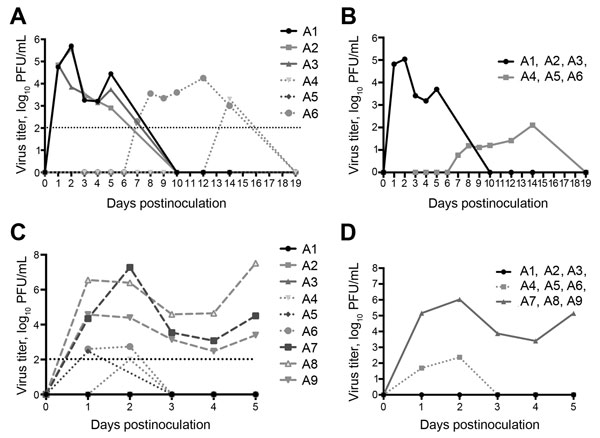Volume 22, Number 6—June 2016
Research
Infection, Replication, and Transmission of Middle East Respiratory Syndrome Coronavirus in Alpacas
Figure 2

Figure 2. Virus shedding (nasal swab specimens) in 6 alpacas experimentally infected with Middle East respiratory syndrome coronavirus (A1–A3) and co-housed with infected animals (A4–A6). A, B) initial challenge; C, D) rechallenge with addition of 3 immunologically naive alpacas (A7–A9). Individual animal results (A, C) and group means (B, D) are shown. Dotted vertical lines indicate detection limit of the assay.
Page created: May 16, 2016
Page updated: May 16, 2016
Page reviewed: May 16, 2016
The conclusions, findings, and opinions expressed by authors contributing to this journal do not necessarily reflect the official position of the U.S. Department of Health and Human Services, the Public Health Service, the Centers for Disease Control and Prevention, or the authors' affiliated institutions. Use of trade names is for identification only and does not imply endorsement by any of the groups named above.